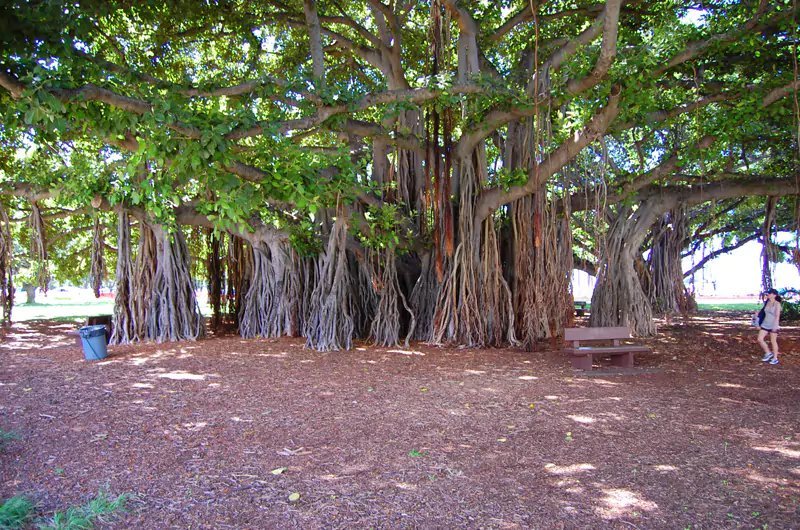Banyan Tree

Banyan Tree Overview
Banyan trees can be seen all over the Hawaiian Islands. People who see these trees for the first time often gaze at them in awe. Some banyan tree species can be real giants, such as for example the Indian banyan, which is one of the broadest-spreading trees in the world.
As banyan trees grow, they drop aerial roots to the ground from the undersides of their branches. When these roots touch the ground, they thicken and grow into the earth, forming a new trunk.
Large banyans can have so many trunks that it is difficult to tell which one is the main trunk, the core. A good example of such a large banyan is the popular banyan tree in downtown Lahaina on Maui. It covers three quarters of an acre. There are about 60 types of banyans (ficus) in Hawaii.
Frequently Asked Questions
Are banyan trees native to Hawaii?
No, banyan trees are not native to Hawaii. Many were introduced from India and other regions but have become iconic on the islands.
What makes banyan trees unique?
Banyan trees grow aerial roots from their branches. When these roots reach the ground, they become trunks, creating a network of connected stems.
Where is the most famous banyan tree in Hawaii?
One of the most famous is the banyan tree in Lahaina, Maui. It spans nearly an acre and has over a dozen trunks. The tree was heavily damaged in the fire that destroyed the town in August 2023.
How many types of banyan trees are in Hawaii?
There are about 60 species of banyan (ficus) trees in Hawaii, ranging from small ornamental types to massive canopy trees.
Why do tourists love banyan trees?
Banyan trees make a stunning visual impression due to their sprawling size and maze of trunks. They're a popular photo spot and a symbol of tropical beauty.








